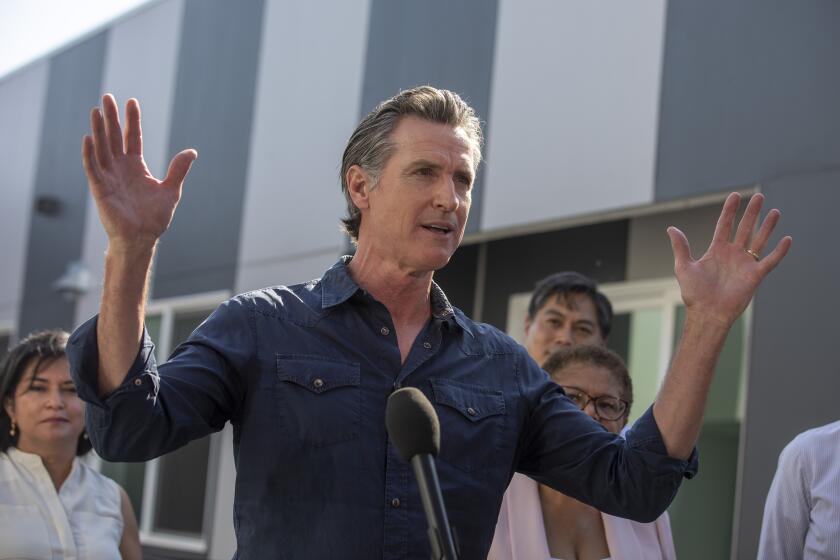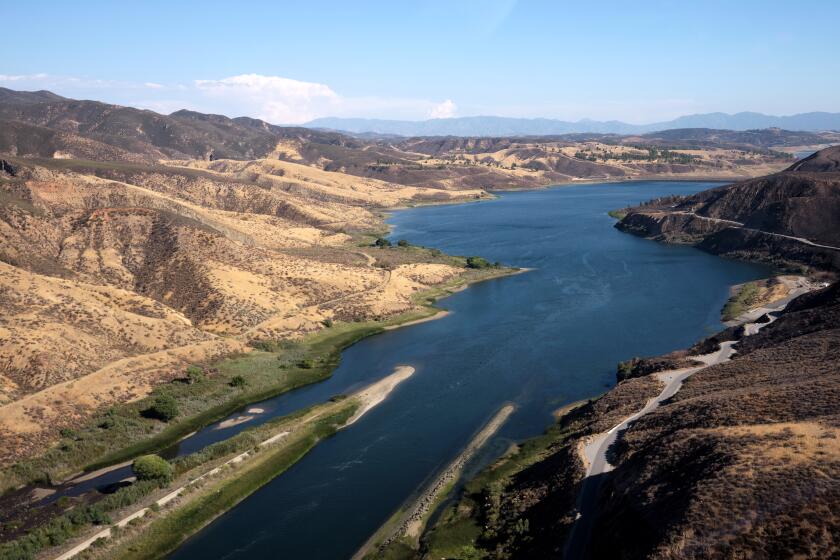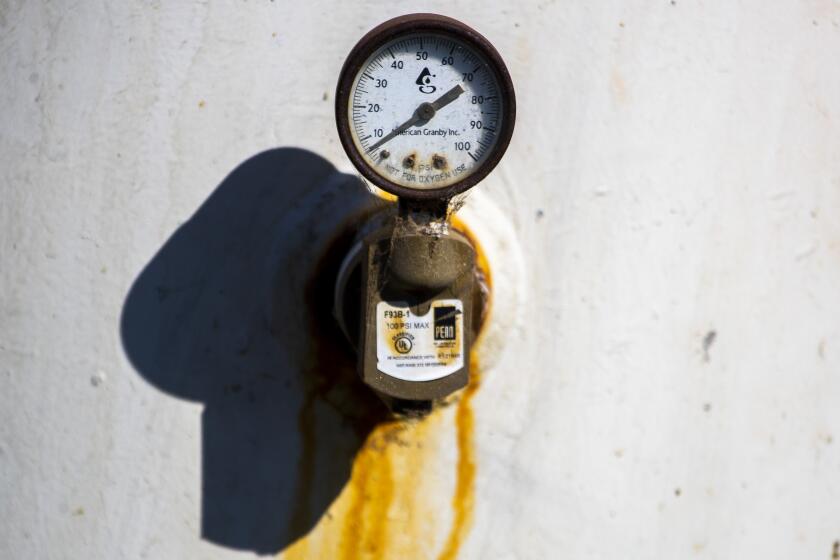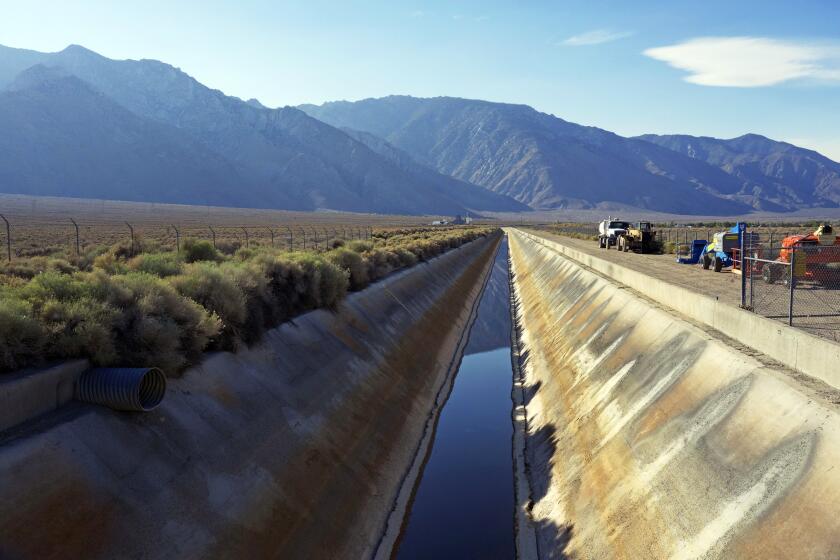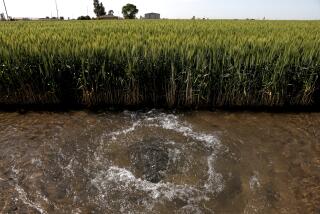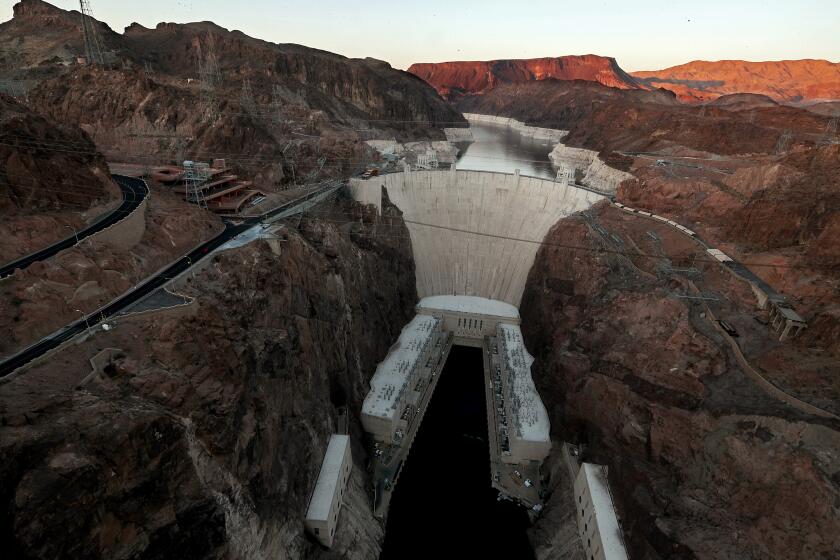As drought drives prices higher, millions of Californians struggle to pay for water
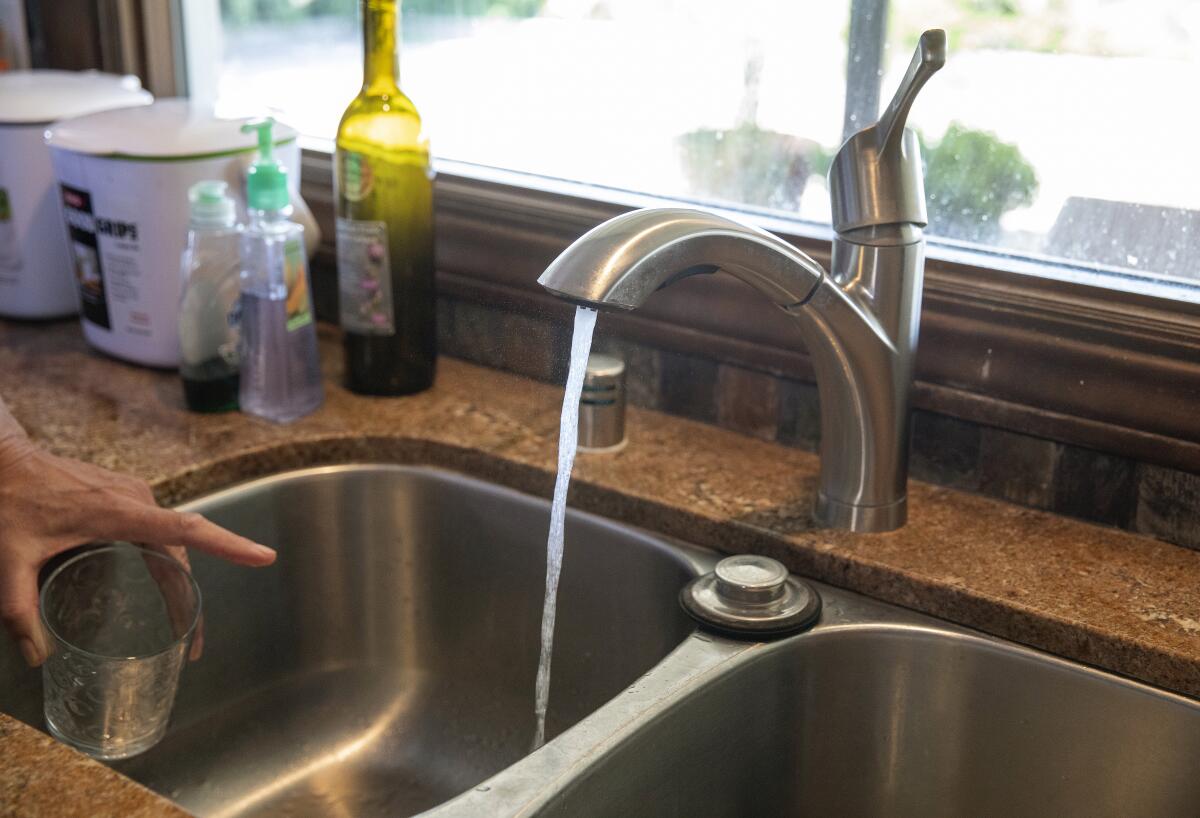
Several months ago, Rosario Rodriguez faced a financial dilemma that has become all too common for millions of drought-weary Californians — either pay the electric bill, which had skyrocketed to about $300 during a scorching summer in western Fresno County, or pay the $220 combined water, sewer and trash bill.
“Our water is expensive, even though we can’t drink it because it’s contaminated,” Rodriguez said in Spanish.
In the end, Rodriguez opted not to pay the electric bill from May to July, knowing she could get help from the Fresno Economic Opportunities Commission, a local nonprofit. No such assistance that she knew of was available for water, however.
For a family of four living off $25,000 a year, a water bill of more than $200 a month is an economic burden. Now, with 1 in 10 California households falling into arrears on water payments, calls are mounting for the state to step in and help.
“If we had a water discount, we’d have a little extra money for food or to buy our daughters clothes, shoes and other things they need for school,” said Rodriguez, whose family rents a home in the rural, unincorporated community of El Porvenir.
The Rodriguez family is among an estimated 13 million Californians living in low-income households who bear the brunt of soaring water costs, experts say.
Although the state has declared that all residents have a right to clean, safe and affordable drinking water, officials have yet to make good on that promise.
In his next term, the governor must ensure that the progressive changes he’s pushed are implemented effectively.
Most recently, Gov. Gavin Newsom vetoed Senate Bill 222, legislation that would have required all California community water and wastewater systems to offer rate assistance to residential water customers.
In his veto letter, Newsom said that while safe and affordable drinking water was a top priority of this administration, the program lacked a source of funding. “Signing this policy would result in significant General Fund pressures in the billions of dollars to continuously provide such assistance,” he said.
The veto came as a blow to water affordability advocates, who say the governor had vastly overestimated the cost of the program.
“This is both an environmental and racial justice issue,” said Michael Claiborne, directing attorney for the Leadership Counsel for Justice and Accountability. “The state has said a lot of good things in terms of commitment to addressing environmental and racial justice, but I think this is another example where we, as a state, have fallen short and need to do more.”
Across the state, water utility prices are escalating faster than other “big ticket” items such as college tuition or medical costs, according to David Mitchell, an economist specializing in water.
“Cost containment is going to become an important issue for the sector in the coming years” as climate change worsens drought and water scarcity, he said.
The price of water on the Nasdaq Veles California Water Index, which is used primarily for agriculture, hit $1,028.86 for an acre-foot on Oct. 20 — a roughly 40% increase since the start of the year. An acre-foot of water, or approximately 326,000 gallons, is enough to supply three Southern California households for a year.
Mitchell said there are short- and long-term factors contributing to rising water costs.
Long-term factors include the replacement of aging infrastructure, new treatment standards, and investments in insurance, projects and storage as hedges against drought.
In the short term, however, drought restrictions play a significant role. When water use drops, urban water utilities — which mostly have fixed costs — earn less revenue. They adjust their rates to recover that revenue, either during or after the drought.
“So it’s not right now a pretty picture,” Mitchell said.
As rates climb statewide, water affordability will only become a bigger challenge for many Californians.
Adjusting for inflation, the average family was paying 45% more per month for water in 2015 than in 2007, according to a 2020 report by the California State Water Resources Control Board. It’s a financial burden that disproportionately affects low-income and Black, Latino, Indigenous and other households of color.
A recent survey on the COVID-19 financial impact on water systems and customers found that 12% of California households were behind on their water bills, with an average debt of $500 per household. Statewide, Californians owe $1 billion; of that, $600 million was specifically for drinking water. The debt was most acute in Los Angeles.
L.A. has invested significantly in its water future, but many projects remain unfinished. We asked Karen Bass and Rick Caruso their plans.
Elizabeth Hicks, a Willowbrook resident, fell behind on her water bills a few years ago. She had lost her job as a banker and was making $300 a month sitting on the board of directors of her local water district. She received financial assistance from the city, and a couple of years later had bounced back.
Although her monthly water bill now is fixed at $67.84, Hicks is starting to worry again as water prices continue to rise — not only for herself and her husband, but also for her community.
Willowbrook and Compton, its southeastern neighbor, have some of L.A. County’s worst affordability challenges — and a history of receiving discolored, contaminated water.
“It’s a disadvantaged community,” Hicks said. “We have senior citizens and certain individuals that cannot afford to pay their bill. ... I don’t want to see my community go more into debt.”
Kelsey Hinton, communications director for the Community Water Center, said that “with everything getting more expensive because of inflation, because of COVID, because of the status quo right now, that is only going to increase as we continue moving forward.”
Average water bills vary considerably across the state, with water systems reliant on groundwater tending to have lower rates, while smaller ones usually have higher costs because system investments are pricier.
Every month, families like Rodriguez’s must choose between bills to pay and are left wondering whether they’ll have enough money left over for other household expenses and needs like prescriptions, child care or school supplies.
Though state programs exist that offer ongoing support for other utilities and essentials (CalFresh and the California Alternate Rates for Energy, for example), the California Water and Wastewater Arrearage Payment Program, enacted in response to the pandemic, and the Low Income Household Water Assistance Program offer only one-time funding assistance for indebted households.
“So even if their debt gets wiped out today, there’s nothing available to keep you from accruing more debt in the future,” Hinton said.
Even then, water companies must choose to participate in the arrearage programs; those who don’t exclude their customers from financial aid. But not everyone who can benefit from these programs has access to them. People without legal status are often left out.
Lauren Ahkiam, director of the Water Justice L.A. Campaign, said households that have their water shut off because they can’t afford the bill are vulnerable to larger problems: liens can be put on their homes or children can be taken away if there’s no running water in the household.
Dry wells and contaminated drinking water mostly affect low-income communities of color. Experts say drought and climate change are making it worse.
“Even if the water bill isn’t the largest portion of someone’s expenses, the way that it can trigger public health concerns for folks or snowball into other impacts to a family that’s already struggling, that’s really concerning to us as well,” she said.
Although water affordability concerns are part of the larger issue of poverty, advocates said that legislation like SB 222 would mitigate the financial burden of rising water prices.
“The evidence is overwhelming of the need,” said Gregory Pierce, co-director of the Luskin Center for Innovation at UCLA. Even if the bill lacked funding, signing it would have been an important step “to get the work started,” he said.
But state Sen. Bill Dodd (D-Napa), who introduced SB 222, said he wasn’t surprised it was rejected, given Newsom’s history of vetoing bills without a funding source.
“It was one of those bills that me and my fellow legislators passed through both houses that didn’t have funding attached, and we were hoping to get funding attached, but at the 11th hour, with other needs, that funding melted away,” he said.
Dodd and a coalition of affordable water advocates said the governor’s office overestimated the program’s annual cost.
L.A. pumps its local groundwater, but other water sources are important for replenishing the supply.
The water board’s report estimated the program would have cost approximately $200 million a year, not the billions referenced in the veto letter.
Even so, many water agencies opposed the legislation, expressing concerns over the program’s proposed enrollment process.
Cindy Tuck, deputy executive director for government relations for the Assn. of California Water Agencies, which represents more than 460 public water companies, said the way the program divided state and local responsibilities “would drive up administrative costs unnecessarily and waste money that could be going to help low-income households.”
As the state works to create more resilient water systems, experts said the issue would only get worse, and that delaying solutions would put more people at risk of losing access to water.
ACWA, Dodd and affordable water advocates said they would continue to work closely next year with the governor’s office and the state water board to find funding for a long-term water assistance program.
“The writing’s on the wall,” Pierce said. “Water prices are going up for the next several decades, so we need some assistance program in place like we have in so many other sectors. Water is pretty much the first service that the government can and should provide.”
More to Read
Sign up for Essential California
The most important California stories and recommendations in your inbox every morning.
You may occasionally receive promotional content from the Los Angeles Times.
